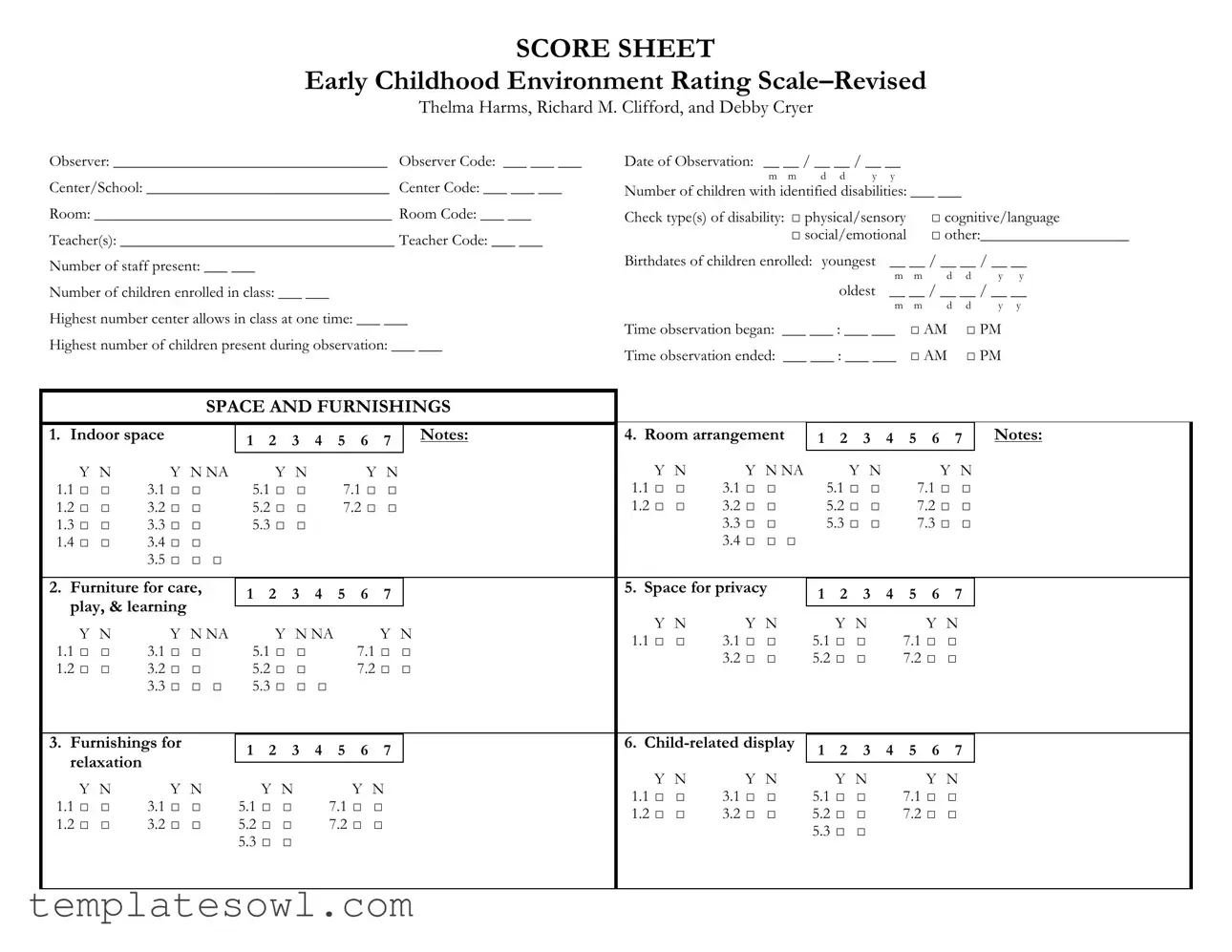What is the purpose of the Score Sheet Scale form?
The Score Sheet Scale form is designed to evaluate early childhood environments. It helps observers assess various aspects of the space, furnishings, personal care routines, activities, and interactions within a classroom or center. This evaluation can guide improvements and ensure an enriching environment for children.
Who should complete the Score Sheet Scale form?
The form should be completed by trained observers, such as educators, program evaluators, or early childhood specialists. Their objective assessment is crucial for accurately measuring the effectiveness of the learning environment.
What information is required before starting the evaluation?
Observers need to fill in specific details, including the observer's name, code, date of observation, center or school name, and room details. Additionally, information about the number of children present, and any children with identified disabilities should be recorded. This helps contextualize the evaluation results.
How are scores assigned on this form?
Scores range from 1 to 7, with each number representing different levels of quality. Observers assess various criteria across multiple categories, such as space and furnishings or personal care routines. Observers note what they see and assign scores based on their evaluations during the observation period.
Can the Score Sheet Scale form be used for assessing children with disabilities?
Yes, the form includes sections to note the presence of children with identified disabilities and allows score adjustments based on the unique needs of those children. This ensures that the evaluation reflects the inclusivity and accessibility of the environment.
How often should the Score Sheet Scale form be completed?
Regular assessments are recommended. Completing the form at least annually provides a benchmark for improvements and helps track progress over time. Frequent evaluations allow for timely adjustments to enhance the learning environment continually.
What should be done with the results from the Score Sheet Scale form?
Results should be analyzed to identify strengths and areas for improvement. Sharing findings with staff, parents, and stakeholders is vital. This transparency encourages collaborative efforts to enhance the environment for children's learning and development.



